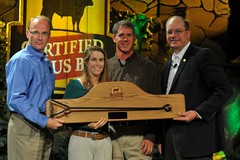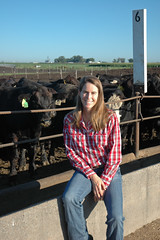Every once in a while my favorite father in law decides that we should take a family trip. Four years ago, we went to Kenya to view the gorgeous animals and diverse types of agriculture. This Christmas we visited Ecuador and the Galapagos Islands.
I am a bit of a homebody in addition to being a work-a-holic so it takes a herculean effort to get me to leave the farm. My father in law is a very smart man. He recognizes that leaving the farm is an important part of personal growth as it allows for a more mature and diverse perspective.
Both times, I came home to the farm smarter than when I left so I guess that proves him right 🙂
I am going to spend the next few weeks sharing pictures and experiences from the trip. I took 1000 photos, and have them whittled down to a short 100 that I plan to share. For clarity, I broke the trip down into two major components: Mainland Ecuador and the Galapagos Islands.
There will be a regular blog post each Monday talking about a component of the trip followed by additional posts that share the “story” of our trip through visual images. I appreciate your patience as I take a side-trip off the farm and into a different world!
The dichotomy of ecosystems that make up much of Ecuador and the Galapagos Islands left me in awed fascination. While the animal life completely captivated me, the plant life offered a continuous surprise.
Our first day began at Churute Mangrove Reserve not far from Guayaquil. There we took a boat ride to view the vast array of birds and a hike to see Howler Monkeys. While there, we gave our own personal blood donation to the hoards of mosquitoes that waited excitedly for us!
The bus ride from sea level up into the Andes Mountains amazed me. The tropic jungles at 8000 feet defied rational explanation to a farm girl who lives far from the equator. The mountains peak at about 13,000 feet with an interesting change of plant life and no sign of snow.
While in the Andes, we visited a middle school in the village of Cojitambo (near the city of Cuenca). My girls loved the lively soccer game against the local students. From there, we spent an afternoon rock climbing and visiting Canari (pre-Inca) ruins. We rounded out our time in the mountains horse back riding and learning to cook authentic Ecuadorian dishes. My favorite 16 year old was even “cleansed” by an older native woman at the public market in Cuenca. This local ritual brought the rich culture to life for my American “Gringa girl”.
Leaving the mainland of Ecuador for the Galapagos Islands brought more natural dichotomies in the midst of an incredibly diverse wildlife population. Cactus plants growing amongst mangrove bushes — both of them nestled together in volcanic rock along the edge of the Pacific Ocean. Penguins living side by side sea lions and pelicans. Land tortoises, flamingos, blue-footed boobies, iguanas, mating sea turtles, crabs and a host of sea life captivated my fledgling photographer’s eye.
In Kenya, I took a diary full of notes and a few pictures. In Ecuador and the Galapagos Islands, I took a diary of photos with only a small amount of notes. The images captivated me and seemed to tell a story independent of the written word.














While visiting a small mountainside village in Mexico, I watched the local kids play soccer. Sadly there was no field, so the kids made do and played in the street on an extremely steep hill. Every five minutes or so, they switched sides.
Where there is a will, there is always a way.
Yes, where there is a will there is a way. The kids played on a concrete area within the school facility. It was smaller than a normal soccer field and with a smaller and heavier ball, but other than that it was the soccer game that Karyn (my youngest) plays in Nebraska.
I was very impressed by the kids. They were happy, naturally competitive kids. The game was great. The kids (mostly boys) were on winter break, but traveled to the school to play soccer against us on their own accord. Many of them have family members that live in the US and send money back home to Ecuador, so this was a way for them to meet some Americans and get a bit of comfort with the people/the place where those relatives live.
The classrooms were bright and cheerful. Their supplies (books and computers) were much less than we have in the states, but the teachers that we met were dedicated to their profession. The challenge in the small towns in Ecuador is to keep the kids going to school in high school. Many of them have to travel a long distance to get to a high school, and there are family pulls for them to go to work instead of finishing school. The Spanish in Ecuador was very clear and easy to understand. It would be a great place for Spanish speaking American teachers to go if they wanted to teach internationally. We only traveled on the mainland near Cuenca, but this area appeared to be a safe and welcoming community.
Thanks for sharing. Great to hear your thoughts.
Best,
Anne
That last photo is so cool. It amazes me. I’m looking forward to your posts about your trip.
Who are the girls on the right in the photo with the grandparents? The grandparents look very happy in that photo. 🙂
I’m glad you had a good trip.
Yes, I love that photo as well — such a beautiful paradox. The extra girl in the picture is a cousin. The rest are my three 🙂
I hope that all is well back east! We are cold here — 4 degrees this morning but thankfully no wind to speak of. We got down to -11 a week ago. The weather seems to think it is January! Our chickens are not laying well. I assume it is a by product of the cold and lack of sunshine/light. We actually had to buy eggs the other day at the store! Do your chickens keep laying in the winter? What do you do to help them? How many years do they consistently provide eggs?
Thanks for the help!
Anne